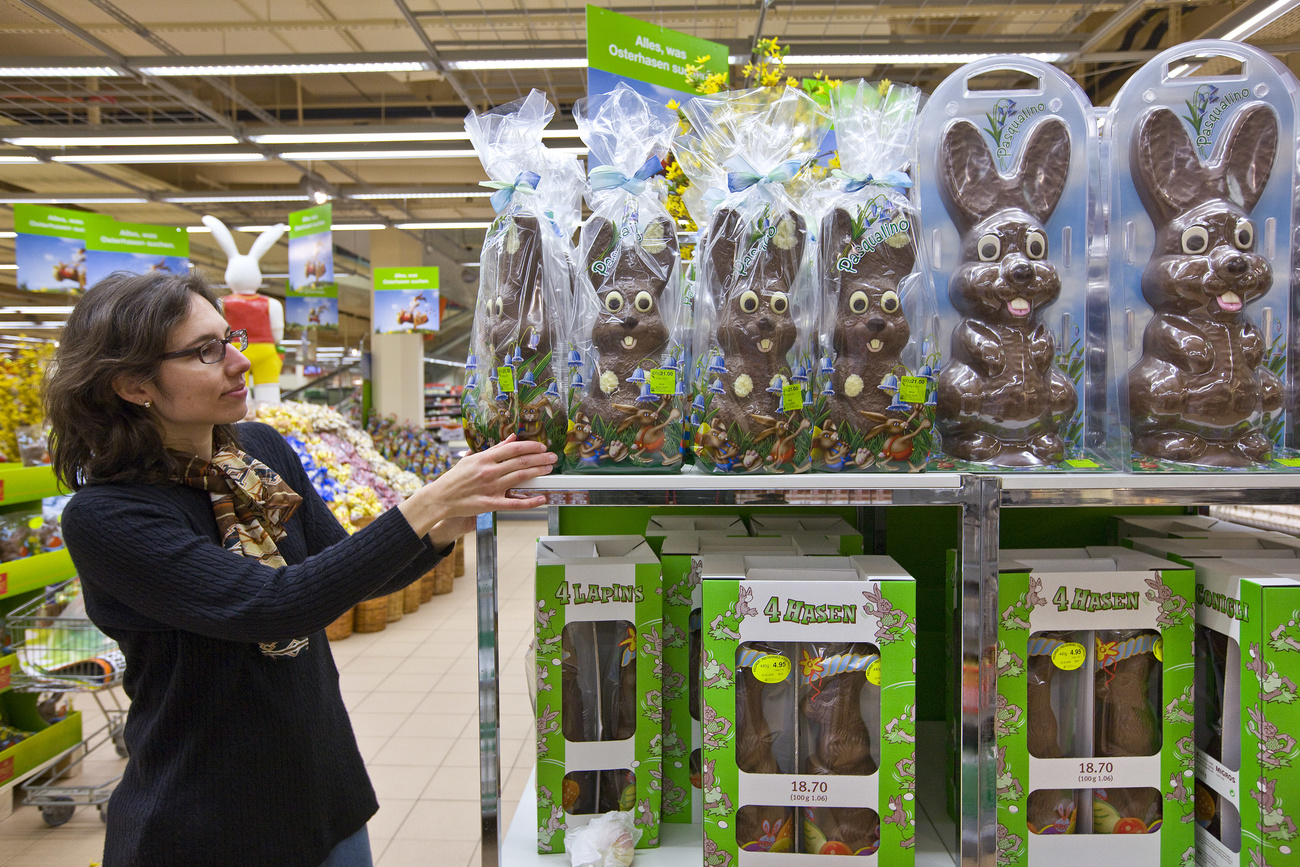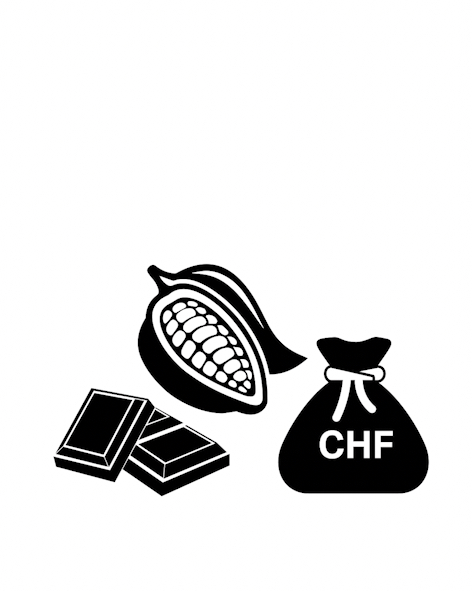How much more are you willing to pay for Swiss chocolate?

Cocoa prices briefly crossed $10,000 (CHF9,058) per tonne on the futures market on Tuesday, an all-time record. Swiss chocolate makers can no longer avoid passing on the cost to consumers.
Poor weather and disease in Ivory Coast and Ghana have led to a deficit in cocoa beans for the third year in a row. The two West African countries account for about 60% of global cocoa production.
The International Cocoa Organization estimates that there will be a shortfall of 374,000 tonnes for the 2023-2024 season compared to 74,000 tonnes the previous season. These shortfalls have meant that the price of cocoa on futures markets has more than tripled over the last year. On Tuesday, cocoa futures surged to a record high of $10,080 per tonne, ending the day at $9,622.
Consumers must eventually pay more
So far, consumers have not borne the full brunt of higher cocoa costs when shopping for their favourite chocolates that are made in Switzerland. This is because prices are negotiated with supermarket chains at fixed intervals and not on a continuous basis.
“As a result, part of this increase remains the responsibility of the manufacturers. In a context of heightened price sensitivity, this exacerbates the challenges for Swiss chocolate, which is often a premium product,” Thomas Juch, a spokesperson for the Association of Swiss Chocolate Manufacturers, Chocosuisse, told SWI swissinfo.ch by email.
To qualify as Swiss chocolate at least 80% of all raw materials (except cocoa) should originate in Switzerland. Quality standards also require milk chocolate to contain a minimum of 30% dry cocoa solids compared to just 10% in the United States.
Big players often hedge purchases by buying cocoa in advance to minimise the risk of price volatility. This means they do not have to pass on rising costs immediately to consumers and risk losing demand for their products.

More
How the humble cocoa bean gets turned into chocolate and money
However, this strategy is not sustainable over the long term, especially for premium chocolate made in Switzerland with high percentages of cocoa.
“Cocoa prices have tripled over the last year. While we have only passed on a fraction of the price increase to consumers in 2023, thanks to efficiency programs, we may need to make responsible adjustments to pricing in the future given the persistently high cocoa prices,” says a spokesperson for Nestlé, which owns premium Swiss chocolate brand Cailler.
While releasing its 2023 results this month, Lindt & Sprüngli revealed that it had increased the price of its products by 10.1% in 2023 without a drop in sales volume – yet. It remains to be seen if consumers are ready to swallow more price increases.
“The price hike in cocoa will require further price increases in 2024 and 2025, assuming that cocoa prices remain at current levels. We do not adjust our recipes, but we offer a wide range of products in different sizes and formats,” says a spokesperson.
Edited by Virginie Mangin/dos

In compliance with the JTI standards
More: SWI swissinfo.ch certified by the Journalism Trust Initiative

You can find an overview of ongoing debates with our journalists here. Please join us!
If you want to start a conversation about a topic raised in this article or want to report factual errors, email us at english@swissinfo.ch.